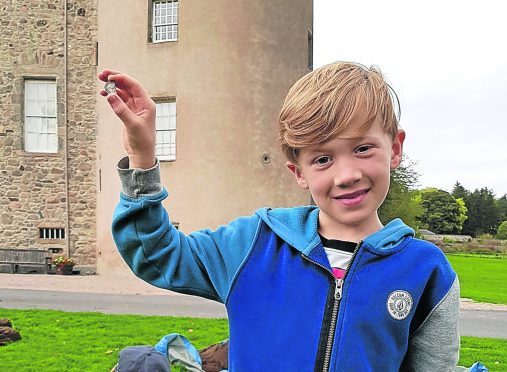One schoolboy will have a lot to write about when he goes back to class next week after finding a rare Elizabethan coin during a day out to Castle Fraser.
Taking part in the National Trust for Scotland (NTS) archaeological dig at the historic site near Inverurie,
Nine-year-old Sonny Crighton, from Banchory, found a fragment of a sixpence that dates to 1572 and the reign of Elizabeth I.
He said: “At first I thought it was a bit of glass because it was covered in dirt.”
But resident archaeologist Daniel Rhodes cleaned up the coin to reveal its true worth, commenting: “It is an Elizabeth I sixpence and you can tell this from the coin itself.
“There is a picture of the Queen’s head on one side.
“You can see it has been broken, this is how coins worked back then: if you owed someone threepence you would break off half a sixpence and give it to them.”
The coin is now set to be sent to specialists in Edinburgh at the National Museum of Scotland, but Mr Rhodes added: “Once it is decided what is best to do with the coin it should come back to Aberdeenshire and be displayed somewhere near the castle.”
More than 450 people came along to take part in digs at Castle Fraser and Crathes Castle last week and got the chance to be “archaeologist for the day”.
Mr Rhodes said the turnout for the events had been encouraging.
“It was great to see everyone get involved. By doing the digs we can unearth more history and knowledge about the area and the castle at the time,” he said.
“We had so many people taking part from youngsters to people in their seventies.”
Castle Fraser is operated by NTS which estimates that the core of the castle possibly dates back to the 1450s.
Later additions were made to the building, eventually creating one of the largest tower houses in Scotland. It was home to the Fraser family for more than 400 years.
